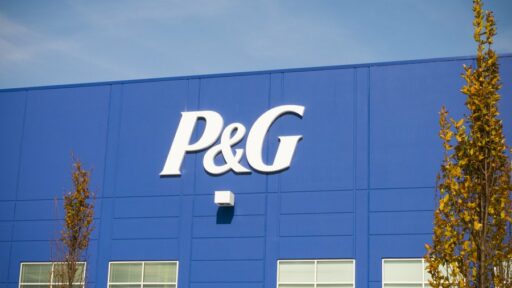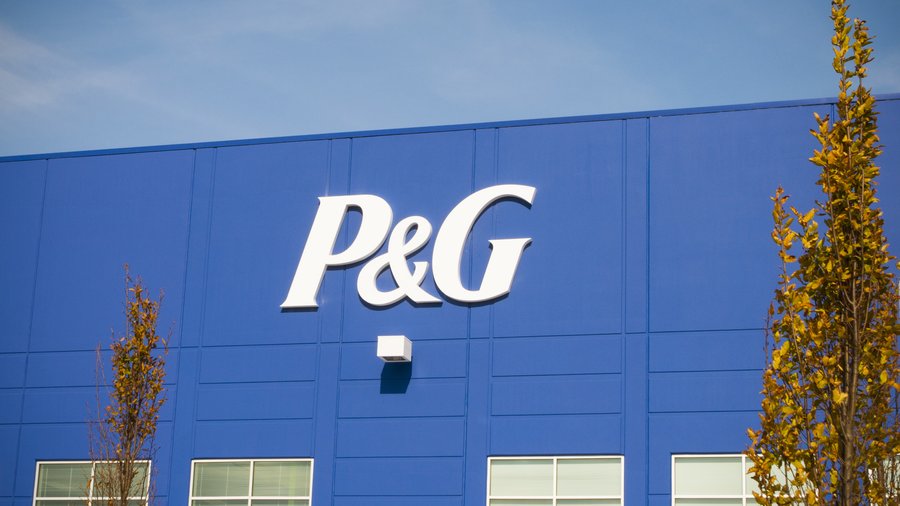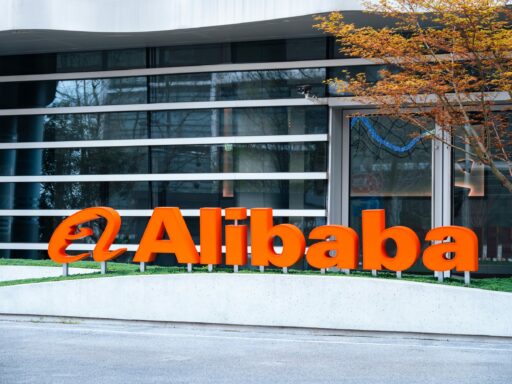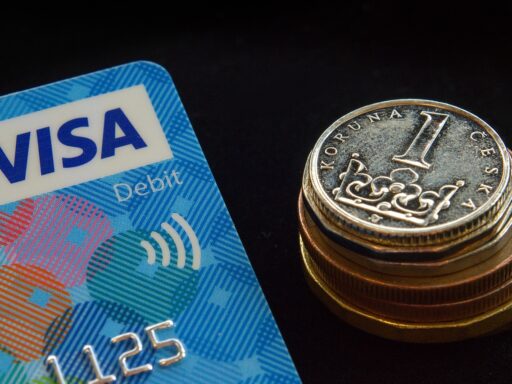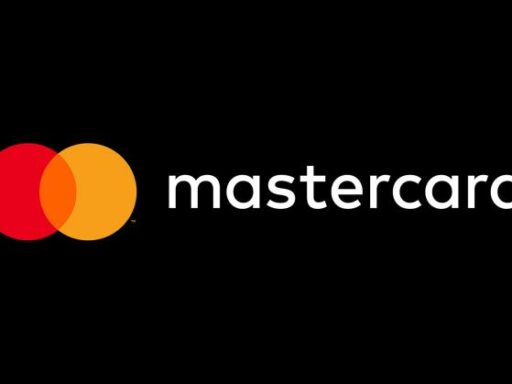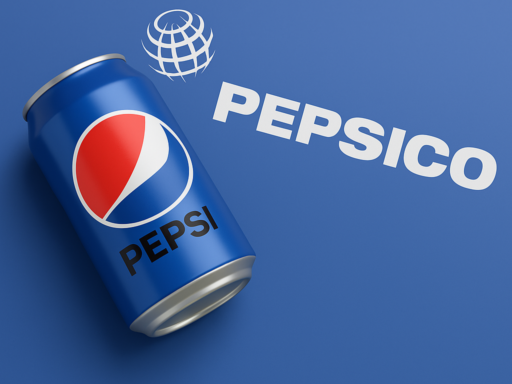Procter & Gamble (P&G), one of the world’s largest consumer goods companies, is home to iconic brands like Tide, Pampers, Gillette, Pantene, and Oral-B. With operations in over 70 countries and products used in billions of households daily, P&G’s environmental and social footprint is massive. Recognizing its global impact, the company has made sustainability a core business priority, embedding environmental stewardship, responsible sourcing, and social equity into its operations and product design.
Through its comprehensive Ambition 2030 program, P&G is working to decouple business growth from environmental impact, with goals tied to climate action, water conservation, circular packaging, and supply chain sustainability. The company is also committed to achieving net-zero greenhouse gas emissions across its operations and value chain by 2040, aligning with the Science Based Targets initiative (SBTi).
- P&G achieved a 57% reduction in Scope 1 and 2 emissions from its operations between 2010 and 2022.
- The company used 78% renewable electricity globally as of 2023.
- Over 90% of P&G packaging is now recyclable or reusable.
Source: https://us.pg.com/sustainability/
Sustainability Strategy and Goals
P&G’s sustainability strategy, Ambition 2030, is built around four pillars: climate, water, waste, and equality & inclusion. The program includes measurable targets across the value chain, from product design and raw material sourcing to consumer use and end-of-life disposal.
Climate is a central focus. P&G has committed to achieving net-zero greenhouse gas emissions by 2040 across Scopes 1, 2, and 3, with interim goals of cutting operational (Scope 1 and 2) emissions by 50% and reducing supply chain emissions by 40% by 2030. These targets are aligned with the SBTi 1.5°C pathway.
On the packaging side, P&G aims to make 100% of packaging recyclable or reusable by 2030, while reducing its use of virgin petroleum-based plastics by 50%. The company is scaling refillable, reusable, and concentrated formats across its brands and works with partners to expand recycling infrastructure in key markets.
Water stewardship is another priority. P&G plans to restore more water than it consumes at its high-water-risk manufacturing sites and to develop low-water-use products, especially for laundry and haircare in water-scarce regions.
- Net-zero GHG emissions by 2040, with 2030 targets of 50% reduction in Scopes 1 and 2, and 40% in Scope 3.
- 100% of P&G packaging to be recyclable or reusable by 2030, with a 50% reduction in virgin plastic use.
- 100% of manufacturing sites in water-stressed areas to be water-balanced by 2030.
Source: https://us.pg.com/sustainability/environmental-sustainability/
Key Sustainability Innovations and Technologies
P&G is driving sustainability through product innovation, digital technology, and circular design. Many of its consumer brands now feature concentrated products, refill systems, and plastic-free packaging. For instance, Tide Eco-Box and Ariel Pods offer reduced water and plastic use, while Herbal Essences and Pantene are piloting aluminum refillable bottles.
P&G also developed EC30, a line of waterless personal care products that are plastic-free, lightweight, and require no bottles, significantly reducing carbon intensity from production and transportation. In oral care, Oral-B’s recyclable toothpaste tubes and refillable toothbrush handles are being launched across markets.
On the supply chain side, P&G employs AI and IoT-based analytics to optimize factory energy and water use. Its sustainable manufacturing technologies include closed-loop water systems, renewable steam production, and zero-waste-to-landfill practices across most of its global sites.
- EC30’s waterless personal care products reduce transportation emissions by up to 80%.
- Tide Eco-Box uses 60% less plastic and 30% less water than traditional bottles.
- Over 80% of P&G plants globally send zero manufacturing waste to landfill.
Source: https://us.pg.com/news-stories/sustainability/pg-ambition-2030-our-environmental-goals/
Measurable Impacts
P&G has made consistent progress toward its environmental goals. Between 2010 and 2022, the company reduced Scope 1 and 2 GHG emissions by 57% and decreased water use per unit of production by 25%. It diverted more than 95% of manufacturing waste from landfills and reached zero-waste-to-landfill status at 75+ sites globally.
In packaging, over 90% of P&G’s packaging materials are now recyclable or reusable, and the company has reduced virgin plastic usage by over 20% since 2019. P&G has also collaborated with TerraCycle’s Loop platform to pilot reusable packaging in Europe and North America.
The company’s impact is tracked and disclosed annually through its Sustainability Report, which provides detailed metrics on energy, emissions, waste, and progress against Ambition 2030 targets.
- 57% reduction in operational GHG emissions since 2010.
- 95% of manufacturing waste is recycled, reused, or recovered.
- 20%+ reduction in virgin plastic usage since 2019.
Source: https://us.pg.com/sustainability/performance/
Challenges and Areas for Improvement
While P&G has made meaningful progress, it faces several challenges. Scope 3 emissions, which include raw material sourcing, consumer use, and product disposal, make up the bulk of its carbon footprint. Many of its products—especially laundry detergents—still depend on hot water use, which contributes significantly to downstream emissions.
Another challenge is the low global recycling rates for household packaging, especially in developing markets. While P&G is investing in design-for-recycling and supporting infrastructure development, the circular economy impact depends heavily on external systems and consumer behavior.
Additionally, scaling reusable packaging and refill systems remains difficult, particularly in mass-market formats and online channels. More work is needed to increase accessibility, affordability, and consumer adoption.
- Over 85% of P&G’s total emissions are from Scope 3, particularly during product use (e.g., hot water).
- Many countries lack the infrastructure to recycle flexible and multi-material packaging.
- Refill formats still represent a small portion of total sales, despite pilot programs.
Source: https://us.pg.com/news-stories/sustainability/the-road-to-net-zero/
Future Plans and Long-Term Goals
Looking ahead, P&G is accelerating efforts to achieve net-zero emissions by 2040, with a strong focus on innovation and supply chain transformation. The company will invest in renewable thermal energy, low-emissions transportation, and regenerative agricultural practices for raw materials like palm oil and wood pulp.
P&G plans to expand refillable and reusable systems across key brands and regions while supporting packaging circularity through partnerships with recyclers, municipalities, and NGOs. New investments are also being made in carbon capture, water-positive technologies, and climate-resilient sourcing.
The company has committed to enhancing supplier transparency, integrating ESG into procurement decisions, and expanding life cycle assessments (LCAs) to identify hotspots and opportunities for emissions reductions.
- Net-zero across all scopes by 2040, validated by SBTi.
- 100% recycled or bio-based plastic packaging by 2030.
- Water replenishment projects in 18 priority watersheds by 2030.
Source: https://us.pg.com/news-stories/sustainability/ambition-2030-updates/
Comparisons to Industry Competitors
P&G is often benchmarked against competitors like Unilever, Colgate-Palmolive, and Johnson & Johnson, which also have aggressive sustainability targets.
Unilever: Committed to net-zero by 2039, with leadership in regenerative agriculture and plastic-free innovations.
Source: https://www.unilever.com/planet-and-society/
Colgate-Palmolive: Targets 100% renewable electricity by 2030, has introduced recyclable toothpaste tubes and bamboo toothbrushes.
Source: https://www.colgatepalmolive.com/en-us/sustainability
Johnson & Johnson: Focuses on healthcare sustainability and aims for net-zero emissions by 2045, with strong water and waste goals.
Source: https://healthforhumanityreport.jnj.com/
- Unilever leads in plastic alternatives and regenerative sourcing.
- Colgate launched the first fully recyclable toothpaste tube.
- J&J is a leader in green chemistry and sustainable packaging for OTC products.
Our Thoughts
Procter & Gamble has shown strong leadership in integrating sustainability across its massive brand portfolio and global operations. The company’s Ambition 2030 roadmap reflects a thoughtful, science-based strategy addressing climate, water, waste, and equity. Its advances in packaging redesign, waste elimination, and product innovation are tangible and impactful.
However, to meet its net-zero goals, P&G will need to tackle the more difficult areas of Scope 3 emissions, increase consumer engagement, and accelerate the shift to circular models. With its global reach and brand influence, P&G is well-positioned to drive sustainable habits at scale—if it continues investing boldly and leading transparently.

